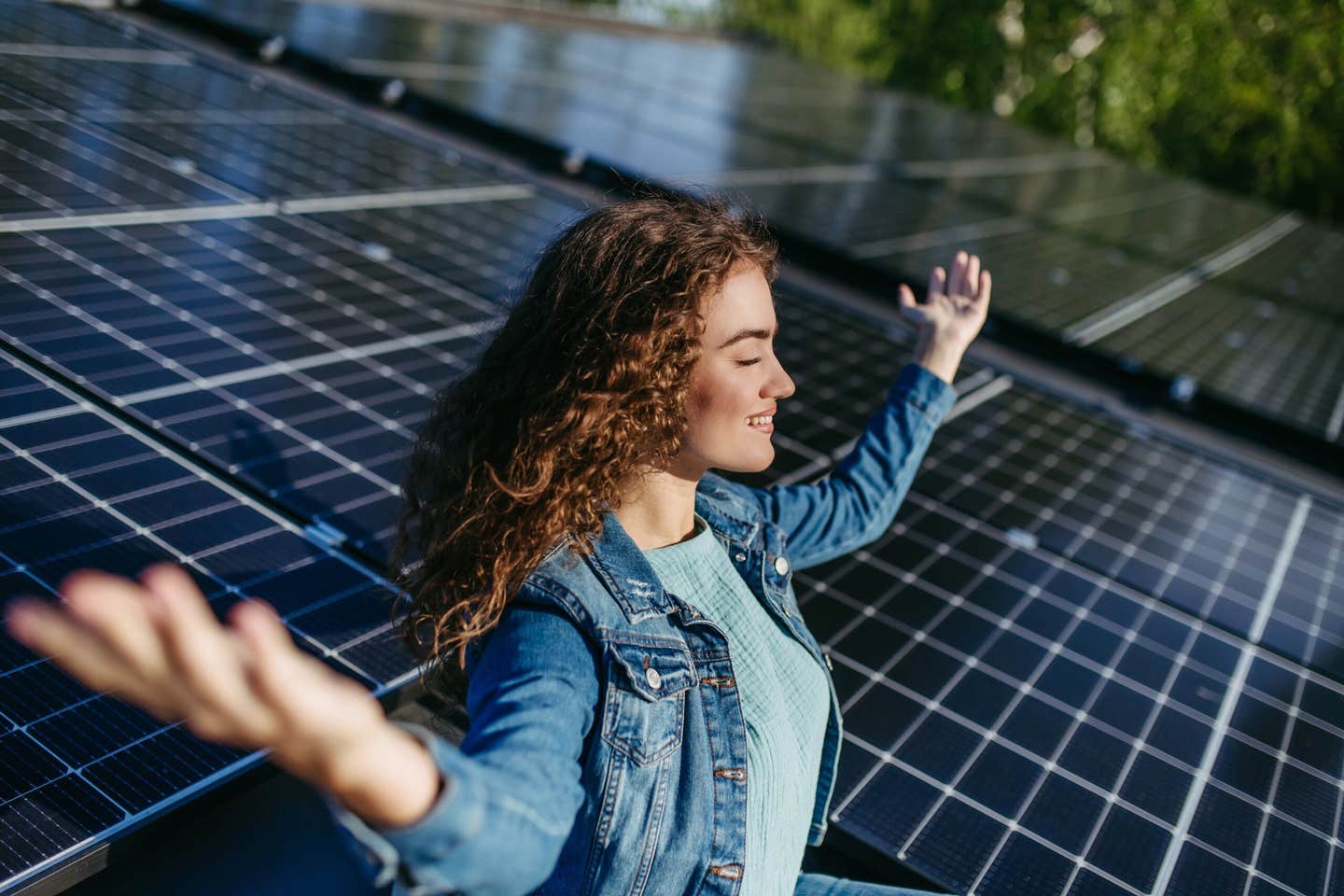Solar energy is now the world’s cheapest and fastest-growing energy source
Solar power becomes the world’s cheapest energy, reshaping the global grid and driving a cleaner, more resilient future.

Solar energy has become the world’s most affordable power source, driving a fast global shift toward clean, reliable, and decentralized electricity. (CREDIT: Shutterstock)
The global energy landscape is transforming faster than ever could have been imagined. In a span of just a few years, solar energy has grown from a possible alternative to a pillar in the global energy landscape.
Pushed by green goals, popular pressure, and geopolitical reasons, governments are racing to replace fossil fuels with cleaner, safer, and more secure power. Solar photovoltaics, once niche technology, now illuminate homes, cities, and nations, offering a glimpse of a decentralized and secure grid.
From Climate Urgency to Energy Security
The 2015 Paris Agreement set this target: keep warming below 2°C by much and aim for 1.5°C. As more than 70% of greenhouse gas emissions come from energy production, the source of electricity is the fastest way to cut emissions. Solar fits into all of that well—it varies from roof-top installations to giant utility plants and supplies electricity to remote areas yet to be reached by traditional grids.
This adaptability also drives energy equity. Community mini-grids and small-scale solar systems already reached more than 100 million people in sub-Saharan Africa and South Asia with electricity. Clean, reliable energy lights up children to study at night, vaccines to keep cool, and small enterprises to thrive. These successes bring the world closer to achieving the United Nations' Sustainable Development Goal 7: reliable, affordable energy for all.
The Price Collapse That Changed Everything
The solar boom is economics. The global average price of utility-scale solar power has fallen more than 80% from 2010 to roughly $0.03 per kilowatt-hour in sunny locations. Solar is cheaper than fossil fuel in nearly all markets by 2025. Manufacturing scale, especially in China, pushed the cost down. Solar cell efficiency, bifacial modules, and trackers maximized performance and minimized installation costs.
University of Surrey Advanced Technology Institute Director Professor Ravi Silva brought it all into perspective: "Even in the UK, a 50 degrees north latitude country from the equator, solar is the cheapest source for mass energy production." He also said that installed capacity had hit over 1.5 terawatts in 2024—double 2020 and enough to supply hundreds of millions of homes with electricity.
Governments have driven this momentum through ambitious policy. In the United States, the Inflation Reduction Act provides clean energy initiatives with long-term incentives. The European Union's REPowerEU package streamlines permits and gives support to local production. India's Production Linked Incentive program induces domestic production and decreases dependence on imports.
These steps aren't just about the climate—they're also about national security and jobs. Making at home reduces reliance on global fuel shocks, and emerging clean technology sectors create well-paying jobs. International cooperation, such as through the International Solar Alliance, has also helped developing countries finance and install solar at a faster pace.
Growth Beyond Expectations
From 2020 to 2025, solar capacity increased from 760 gigawatts to more than 1.5 terawatts-one of the fastest advances in technology in history. China alone adds nearly 40% of the total new installation in Asia, and India crossed over 100 GW. Europe installed around 70 GW in 2024 with Germany and Spain taking the lead, and the United States continues growing well below new stimulus.
Prices have fallen almost 90% since 2010, and efficiency keeps growing. Solar farms that recently entered production are producing more electricity using fewer panels and less land. In most sunny places—like the Middle East, Chile, and India—solar electricity currently costs about $0.018 per kilowatt-hour, which is significantly lower than coal, gas, or even wind.
Storage and Smart Grids: Solar Becoming Reliable
The sole criticism of solar—that it won't work when the sun doesn't—is fading fast. Battery storage has been the game-changer. Lithium-ion battery costs have fallen 89% since 2010, so that today it is economically viable to store energy generated during the day from the sun and release it at night. Solar-plus-storage facilities now rival natural gas facilities in price and stability.
"Connecting more and more solar energy to power grids is now one of the biggest challenges," said Dr. Ehsan Rezaee, co-author of the study paper. "Smart grids, artificial intelligence-powered forecasting, and stronger regional interconnectors will be key to ensuring the stability of power systems as consumption of renewable energy grows."
In Spain, China, and California, grid congestion already has resulted in "curtailment," when there is more solar energy than the grid can take. Utilities are solving that by matching solar with big batteries and computer weather forecasting systems. California, for instance, now incorporates storage into over 60% of its new solar projects—up from a mere 15% in 2020.
The New Tech Revolution in Solar
Material advances are driving performance more rapidly. Double cells that stack perovskite and silicon, two different light-absorbing materials, have achieved efficiencies of almost 35%. Professor Silva indicated that this kind of development had the capacity to "increase energy output by up to 50% without using more land." If built on a large scale, they had the potential to halve land requirements to produce the same amount of power.
Apart from hardware, digital technology is also changing grid operations. Artificial intelligence technology today forecasts hours of sunlight, balances power flow, and even schedules battery discharge to keep up with demand in real time. Blended with smart inverters and AI-driven controls, solar installations are being made over from passive power generators into networked smart assets that firm up the grid.
A Global Shift in Investment
Investors have taken notice. Worldwide investment in solar in 2024 amounted to $380 billion—larger than for all the fossil fuels combined. Over 70% was private money, and emerging economies increased by 25% due to blended finance products and multilateral assistance. New manufacturing centers are opening in the United States, India, and Southeast Asia, splitting up supply chains once focused in China.
Policy is still critical. While the U.S. Inflation Reduction Act and Europe's Green Deal contain solid blueprints, uncertainty about implementation and legal challenges can stall momentum. Long-term policy reliability and easy rules of permitting will be most important to ongoing growth, analysts argue.
The future grid will not be linear—plant to plug. Homes, buildings, even electric vehicles are now stakeholders. Solar panels on roofs with batteries—and, soon, bidirectional car charging stations—will have homes storing energy, feeding their neighborhoods during power outages, and even selling surplus electricity back to the grid.
With these millions of small producers monitored by artificial intelligence, cities can have low energy rates and be dependable simultaneously. "With the synergy between energy storage and smart grid technologies," Professor Silva explained, "solar can now supply reliable, affordable, and clean energy at scale."
Practical Implications of the Research
The findings represent a turning point in human history: clean energy is cheapest energy. As solar costs keep falling and batteries become mainstream, any home, school, and business can someday make its own electricity. That means fewer fossil fuel uses, less emission, and more community control over energy.
The economies that are poorest have the most to gain, since decentralized solar grids can power villages faster and more affordably than conventional grids.
In developed countries, scaling up solar-plus-storage can reduce household energy bills, decrease pollution levels, and strengthen the grid through heatwaves or storms.
Research findings are available online in the journal Energy & Environmental Materials.
Related Stories
- Solar power from space could help Europe reach net-zero emissions by 2050
- Laser-etched 'black metal' boosts solar power generation by 15x
- Scientists create indoor solar cells that could eliminate billions of batteries
Like these kind of feel good stories? Get The Brighter Side of News' newsletter.
Joshua Shavit
Science & Technology Writer and Editor
Joshua Shavit is a Los Angeles-based science and technology writer with a passion for exploring the breakthroughs shaping the future. As a co-founder of The Brighter Side of News, he focuses on positive and transformative advancements in AI, technology, physics, engineering, robotics and space science. Joshua is currently working towards a Bachelor of Science in Business and Industrial Engineering at the University of California, Berkeley. He combines his academic background with a talent for storytelling, making complex scientific discoveries engaging and accessible. His work highlights the innovators behind the ideas, bringing readers closer to the people driving progress.



